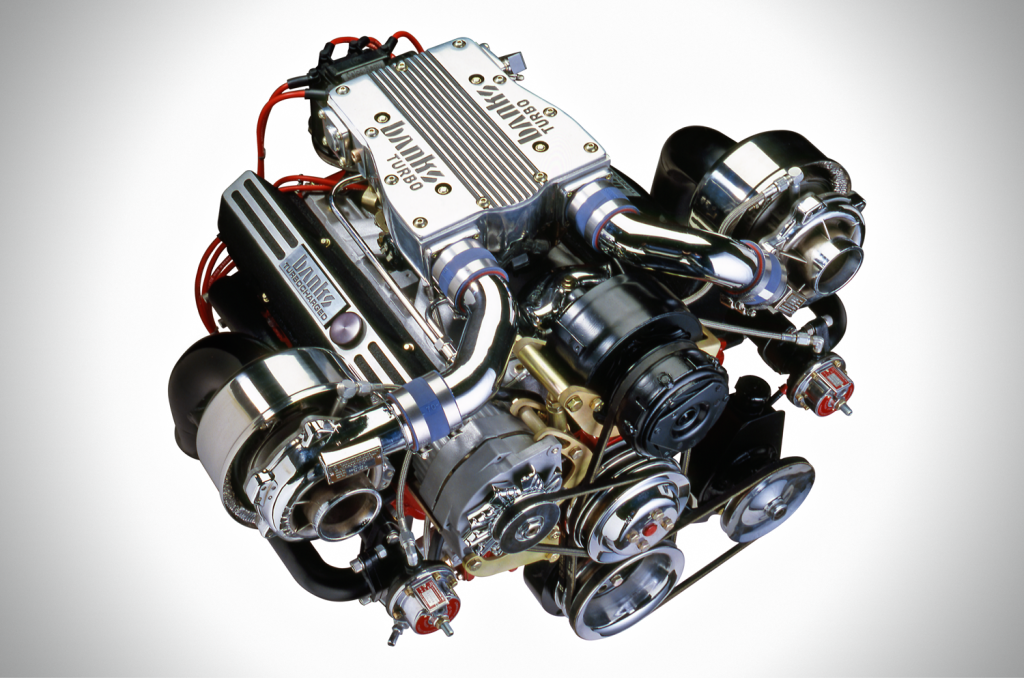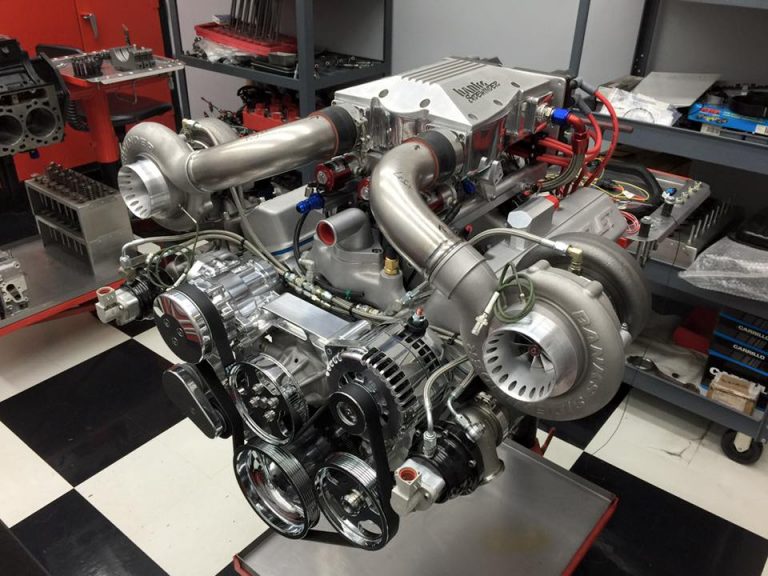Interaction
(From the Archives – 01.25.02)
I have a confession to make (I know some of you are into confessional mode). Before I started this job, I didn’t know how to use a computer as anything other than a typewriter. My computer at home is connected only to itself. I write to disc. If I had to email something, I handed the disc to my wife and asked her to do it, please.

The old carbureted Banks twin turbo system

A new electronic fuel injected Banks twin turbo prototype
When I first got here, someone asked me if I was a troglodyte. My answer was, “What came before troglodytes?” Hey, I drive a ’52 Chevy. My newest vehicle is a ’56 F-100. Neither has air conditioning. I still have my first car, a ’48 Chevy, and it still has its original driveline.
What’s my point? Not only am I suddenly able to access the web, but I am actually writing on it—and you are writing back to me. We are interactive. This is good. So here’s the latest email I have received from web readerland:
Gods of Boost
I was looking to buy a third-generation Pontiac Firebird 3.1L V6 about a month ago. I looked under the hood, and there were a pair of turbochargers, what looked to be a homespun air-to-air intercooler shoehorned inside the cramped engine compartment, and your Banks logo on the engine. I was wary of the engine at first, but this one seemed to have stood the test of time, while being blown, no less.
I fell in love with the consistent power delivery and the “non-peaky” power curve. Turbocharged systems are known for their infamous turbo lag and extremely high operating temperatures. These inherent turbo drawbacks seem to have both been minimized to the point of being a non-issue. I had to have the machine! Unfortunately, I was beaten to the punch. Someone else bought her before me.
I cruised your website to see if I might be able to buy a system from you that would be similar to the one I saw, but it seems as if you’ve almost completely abandoned the high performance car market. I saw one reference that said to wait for new products in development, but I would like to know if you will again sell a twin-turbo kit for GM V6-V8 automobile engines.
I have my eye on another third-generation Firebird that looks to be pretty stock. I want to know if I will be waiting in vain. Should I buy parts to try to engineer a turbo system myself, or are you guys coming out with a spectacular kit that will sate my need to worship the gods of boost?
LeShan Mims
Answer:
There aren’t inherent turbocharger drawbacks. The problems you speak of come from mis-matched or poorly engineered turbo applications. Of automotive high-performance applications, the Banks twin-turbo systems were the best-engineered that I know of, as you experienced with the Firebird you drove. Interestingly, I just spoke with longtime Banks employee Bob Robe, and he said that only three Buick V6’s (which was the engine used in Firebirds—there was no Pontiac V6) were ever turbocharged in the Banks shop: one that appeared on the cover of Hot Rod magazine in 1981, one that was used as a Buick show-display engine that year, and one that resided in John Buttera’s silver ’29 Ford roadster street rod. So the system that you experienced in the Firebird that got away was probably purchased as loose parts and owner-installed.
Banks Engineering has not produced high performance automotive twin-turbo systems for nearly 15 years. But, to answer your question, yes, Banks is tooling up for re-entry into this market. I can’t tell you exactly when, but testing is being done right now on cylinder heads, intake manifolds, pistons, and other components to build twin-turbocharged small-block Chevrolets in 366, 396, and 427-inch displacements. Gale is predicting 800, 1200, and 1600 horsepower engines to be sold as packaged assemblies, otherwise known as “crate motors” (though I don’t think that name is appropriate in this case). Plus the components will be available separately for hardcore do-it-yourselfers.
But the big news is that these new systems will incorporate multiport electronic fuel injection. If you thought the old, carbureted Banks twin-turbo systems ran well (which is saying a lot for any carb/turbo system), wait until you experience an EFI system. Gale is currently designing an intake manifold/cylinder head/piston dome combination to optimize port and runner shape and injector location specifically for this turbo application, and the Banks electronics lab certainly has the experience, at this point, to build a brain to run these high-horsepower monsters seamlessly. Even I have to admit that today’s computer management of fuel and spark curves far supersedes the old mechanical controls, especially in a turbocharged environment. Or, to put it in the bold vernacular, carburetors suck.

